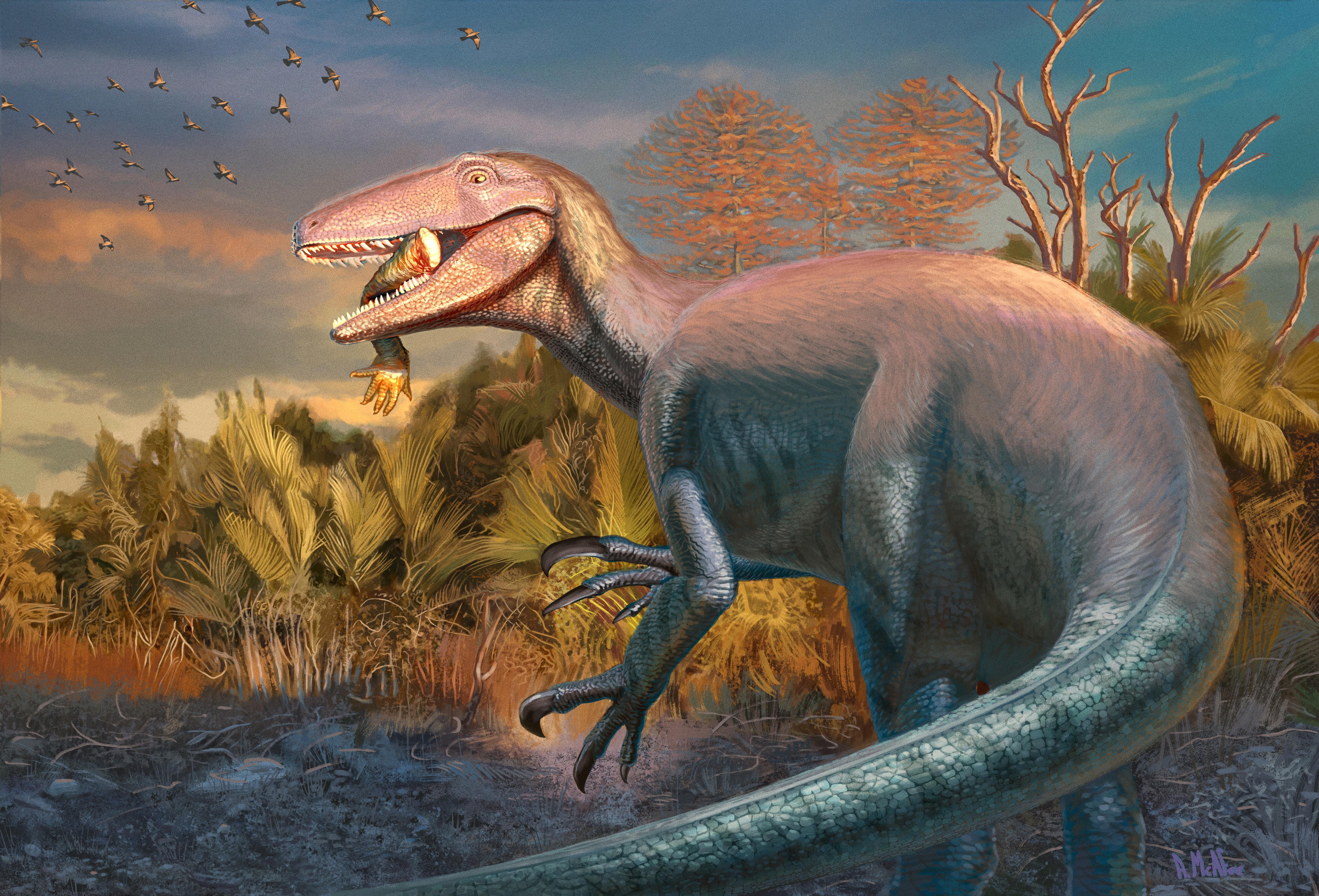Media release
From:
Palaeontology: New predatory dinosaur ruled latest Cretaceous Argentina
A newly discovered species of South American predatory dinosaur, called Joaquinraptor casali, is described in a paper published in Nature Communications. The species, a member of the megaraptoran family of theropods, dates to the latest part of the Cretaceous Period between approximately 70 to 66 million years ago and was a top predator in the region.
Megaraptorans were carnivorous theropod dinosaurs with elongated skulls and powerful forearms with large claws found across Asia, Australia and South America. However, our understanding of this group is hindered by the lack of complete fossils.
Lucio Ibiricu, Matthew Lamanna and colleagues describe a well-preserved and partially articulated fossil — including much of the skull, fore and hind-limbs, ribs and vertebrae — from the Lago Colhué Huapi Formation in Patagonia, Argentina. The authors determine that the specimen dates to the latest Cretaceous, making it one of the most recently surviving types of megaraptorans. Based on the bone microstructure, the authors suggest that the specimen is an adult — but possibly not fully grown — and was likely 19 years old at death. Extrapolating from other megaraptoran remains, they estimate that J. casali may have been around seven metres in length and weighed more than 1,000 kilograms. Sedimentary evidence indicates that it lived in a warm, humid floodplain environment. The presence of a fossilised crocodile leg bone pressed against the lower jaws of J. casali gives hints about its feeding behaviour and suggests it may have been an apex predator in the region. However, the authors emphasise that more research is needed to provide further insights into its behaviour and ecological role.
The authors conclude that J. casali and other megaraptorans survived as the dominant predators in this region of South America before going extinct at the end of the Cretaceous with other non-avian dinosaurs.



 International
International



